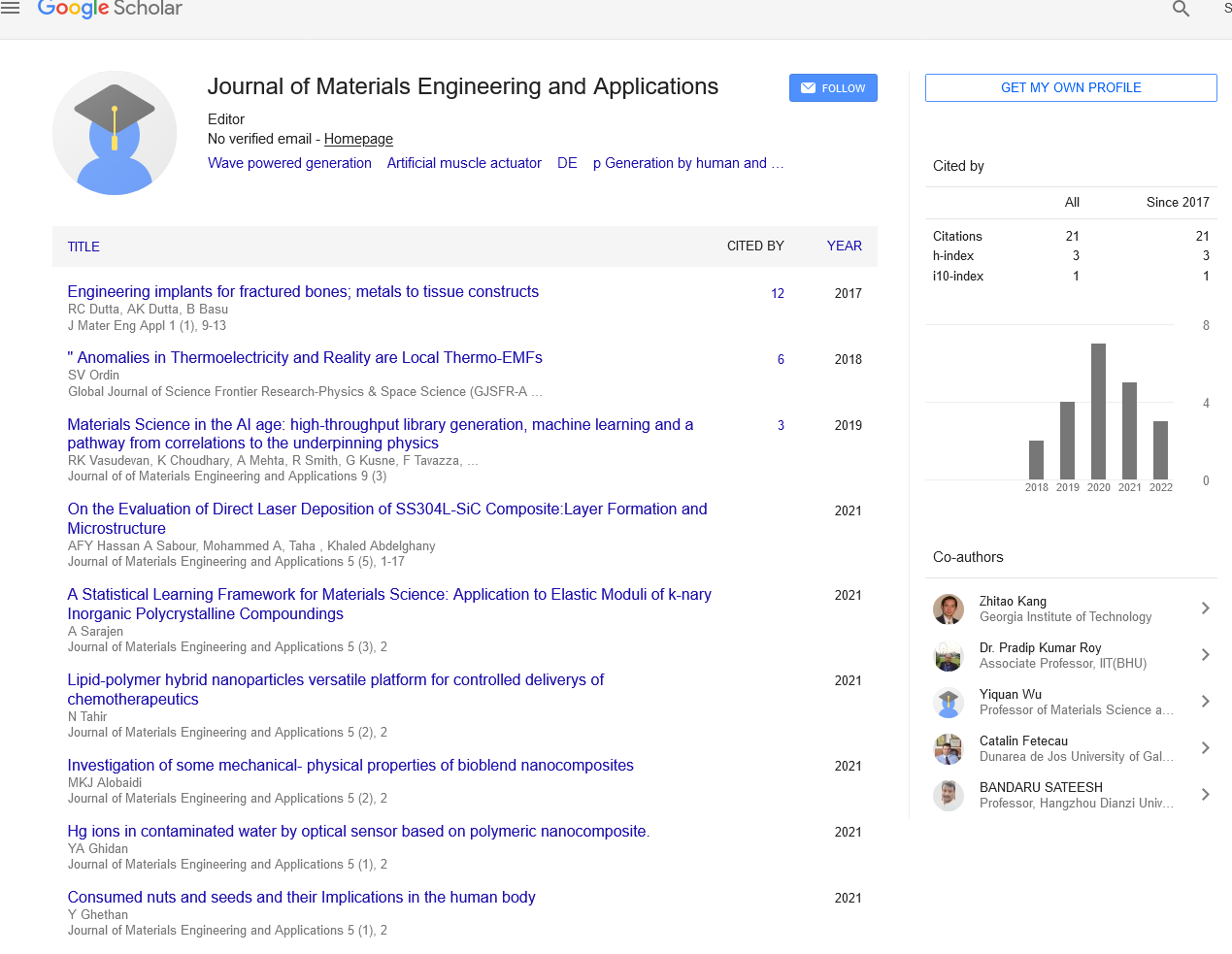
Sign up for email alert when new content gets added: Sign up
Influence of the addition of surfactants in iron oxide microwave synthesis
4th International Webinar on Materials Chemistry
October 21, 2021 | Webinar
Ivana Mitar, Martina Vrankić, Stjepko Krehula, Ante Prkić and Andrea Paut
University of Split, Croatia
Posters & Accepted Abstracts: J Mater Eng Appl
Abstract :
Microwave-assisted hydrothermal synthesis is a method that has been increasingly used in the last decade, mainly because of the reduction in synthesis time, repeatability, and the ability to control the main parameters for iron oxide synthesis. Since nanoparticles of iron oxides are widely used in many scientific and industrial fields such as medicine, industry and biotechnology as inorganic pigments, adsorbents for wastewater treatment, catalysts, electrochemical sensors and medical diagnostics or therapy, there is a growing interest in the preparation of iron oxide nanoparticles with different properties required for various applications. This method was used for the synthesis of hematite (αFe2O3) and goethite (α-FeOOH) in highly alkaline media with iron(III) chloride (FeCl3) as precursor under continuous microwave emission of 850 W at 200 °C for 20 min. The main goal of this research was to investigate the influence of different types of surfactants, such as polyethylene glycol (PEG), N-guanylurea sulfate (NGS) and sodium dodecyl sulfate (SDS) on the shape, size and composition of the final product. Also, addition of different percentages of mentioned surfactants in the reaction mixture were investigated. The nanoparticles were characterized by Fourier Transform Infrared Spectroscopy (FTIR), Powder X-ray Diffraction (PXRD) followed by Rietveld analysis and a Field Emission Scanning Electron Microscope (FE - SEM) was used to determine the size and shape of the nanoparticles. It was found that the samples precipitated without surfactants were pure hematite, while the samples to which surfactants were added gave a different final product and nanoparticle size and shape.
Biography :
Ivana Mitar has her expertise in structural, spectroscopic and microscopic analysis (FT-IR, Mossbauer, UV-Vis-NIR, EDX spectroscopies, FE-SEM). The scientific field of her work is analytical chemistry and scientific interests are chemical synthesis, material characterization and heat treatment.




